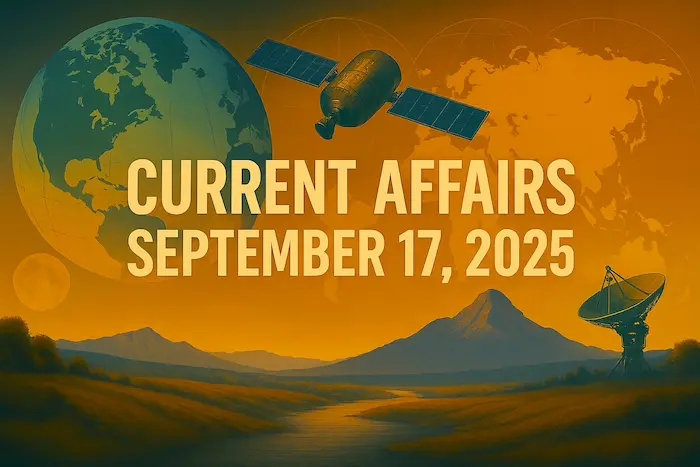1. India Secures ISA Licence to Explore Polymetallic Sulphides – Science and Technology

Why in News?
India has been granted a first-of-its-kind exploration licence by the International Seabed Authority (ISA) to explore polymetallic sulphides in the Carlsberg Ridge of the Indian Ocean. This development strengthens India’s position in the global race for critical minerals required for clean energy technologies.
Key Highlights
- Exploration Area: 300,000 sq. km in the Carlsberg Ridge, Indian Ocean.
- Minerals Present: Polymetallic sulphides contain manganese, cobalt, nickel, copper — vital for batteries and renewable energy tech.
- ISA Licence: India is the first country globally to get a licence for this region.
- Signed: September 2025 with the International Seabed Authority (ISA).
Background/Context
- India previously secured:
- 2002: Rights for polymetallic nodules in the Central Indian Ocean Basin.
- 2016: Rights for polymetallic sulphides in the Indian Ocean.
- The new licence reflects India’s growing expertise in deep-sea mining and commitment to securing future resource needs.
Strategic & Environmental Implications
- Enhances India’s position in securing critical mineral supply chains, crucial for electric vehicles (EVs), solar panels, and energy storage.
- Offers strategic leverage against China’s dominant role in rare earth extraction.
- Regulated under UNCLOS to ensure environmental sustainability and equitable sharing of benefits.
Implications for India
- Strengthens India’s energy and mineral security.
- Reduces dependency on imported critical minerals.
- Bolsters Make in India initiative in renewable energy and battery manufacturing.
- Boosts scientific and technological capacity in deep-sea exploration.
Exam Connect – Possible Questions
Prelims
1. With reference to polymetallic sulphides, consider the following statements:
1. They are primarily found on continental shelves.
2. They contain minerals essential for clean energy technologies like cobalt and nickel.
3. India is the first country to receive an exploration licence for them in the Carlsberg Ridge.
Which of the statements are correct?
A. 1 and 2 only
B. 2 and 3 only
C. 1 and 3 only
D. 1, 2 and 3
Answer: B. 2 and 3 only
(Statement 1 is incorrect – they are found near hydrothermal vents in deep sea ridges, not continental shelves.)
2. The International Seabed Authority (ISA) is associated with:
A. Antarctic Treaty System
B. United Nations Convention on the Law of the Sea (UNCLOS)
C. UN Framework Convention on Climate Change
D. International Maritime Organization
Answer: B. United Nations Convention on the Law of the Sea (UNCLOS)
Mains
1. “The ocean floor is the next frontier for strategic and resource competition.” Discuss the significance of India’s recent ISA licence in the context of global clean energy transitions and strategic autonomy.
2.Critically examine the opportunities and environmental concerns associated with deep-sea mining. How should India balance development and conservation in its seabed exploration efforts?
2. Anticipatory Bail and Caste Crime: Supreme Court’s Ruling – Polity
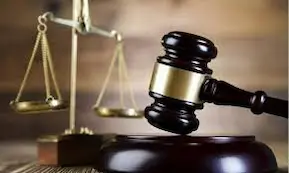
Why in News?
The Supreme Court of India has set aside a Bombay High Court order that granted anticipatory bail in a caste-based atrocity case (Kiran vs Rajkumar Jivaraj Jain). The ruling, delivered by a bench led by CJI B.R. Gavai, emphasized that Section 18 of the SC/ST (Prevention of Atrocities) Act, 1989 prohibits anticipatory bail when a prima facie case is established.
Key Highlights
- Supreme Court Stand: No anticipatory bail if prima facie evidence exists in SC/ST atrocity cases.
- Purpose of the Law: To prevent abuse, protect victims from intimidation and retaliation, and ensure social justice.
- Judicial Interpretation: Reinforces the strict application of Section 18 of the SC/ST Act.
- Electoral Context: The case involved alleged caste-based abuse over voting decisions, highlighting the intersection of politics and caste dynamics.
About the SC/ST (Prevention of Atrocities) Act, 1989
- Enacted to combat caste-based discrimination and violence.
- Prohibits acts like:
- Caste slurs
- Land grabbing
- Denial of access to public spaces
- Sexual violence
- Social boycotts
- Section 18: Bars anticipatory bail under Section 438 CrPC if the offence is cognizable under the Act and a prima facie case exists.
- Aims to protect dignity and rights of SC/ST individuals by ensuring legal accountability.
Case Background (Kiran vs Rajkumar Jivaraj Jain)
- November 2024: An FIR was filed by an SC individual alleging physical assault and caste-based verbal abuse during an election-related dispute.
- Trial Court: Denied anticipatory bail citing provisions of SC/ST Act.
- Bombay HC: Overruled and granted bail.
- Supreme Court: Set aside HC order, reaffirming that granting bail violated Section 18.
Judicial Reasoning
- Caste crimes involve systemic oppression, not just individual conflict.
- Bail in such cases could discourage victims and undermine justice.
- The court reaffirmed legislative intent to safeguard marginalized voices and prevent procedural misuse.
Broader Implications
- Reinforces legal safeguards for Dalits and tribal communities.
- Sends a strong message against judicial leniency in atrocity cases.
- Ensures accountability and deterrence in caste-based crimes.
- Emphasizes the role of judiciary in upholding social justice and constitutional morality.
Exam Connect – Possible Questions
Prelims
1. Consider the following statements with reference to the SC/ST (Prevention of Atrocities) Act, 1989:
1. It prohibits granting of anticipatory bail in all cases filed under the Act.
2. The Act covers offences committed only by public servants.
3. It was enacted to protect SCs and STs from social and economic exploitation.
Which of the statements are correct?
A. 1 and 3 only
B. 2 and 3 only
C. 1, 2 and 3
D. 3 only
Answer: A. 1 and 3 only
2. Which of the following provisions in Indian law deals with anticipatory bail?
A. Article 21
B. Section 438 of CrPC
C. Section 164 of IPC
D. Article 14
Answer: B. Section 438 of CrPC
Mains
1. Discuss the significance of the Supreme Court’s interpretation of Section 18 of the SC/ST (Prevention of Atrocities) Act in reinforcing legal safeguards for vulnerable communities.
2. Critically examine the tension between protecting individual liberties and ensuring justice for marginalized communities in the context of anticipatory bail provisions under Indian criminal law.
3. Supreme Court Partly Pauses Waqf (Amendment) Act 2025 – Polity
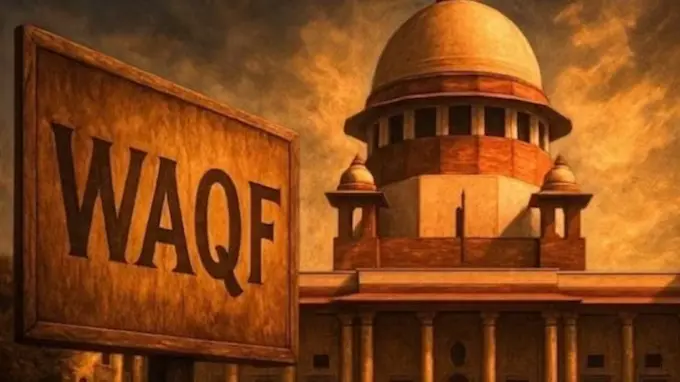
Why in News?
The Supreme Court of India has issued an interim stay on certain provisions of the Waqf (Amendment) Act, 2025, which came into effect in April 2025. The move comes in response to constitutional challenges related to community rights, religious freedom, and administrative overreach.
Key Highlights of the Supreme Court Order
- The SC has not stayed the entire Act, only specific contentious provisions.
- Focus is on safeguarding constitutional rights while allowing the legislative process to function.
- The ruling responds to over 65 petitions challenging the law’s validity.
Contentious Provisions Stayed
1. Powers of District Collectors (Section 3C)
- Provision: Allowed District Collectors to declare Waqf properties as government property.
- SC Ruling: Stayed, calling it potentially arbitrary and violative of due process.
2. Inclusion of Non-Muslims in Waqf Boards
- Provision: Allowed a non-Muslim majority in Waqf Boards.
- SC Ruling: Directed that no more than 4 of 22 members in Central Waqf Council may be non-Muslim.
3. Five-Year Rule for Practising Islam
- Provision: Only Muslims who have practiced Islam for 5 years can create a Waqf.
- SC Ruling: Stayed the clause until the government frames clear rules for determining religious identity.
Provisions NOT Stayed
1. Abolition of “Waqf by Use”
- Definition: Previously allowed land in use for religious purposes to be deemed Waqf even without formal declaration.
- SC Ruling: Omission not stayed; government justified it as a check on misuse and encroachment.
2. Application of the Limitation Act
- Provision: Reinstates Limitation Act for claims against encroachments.
- SC Ruling: Upheld, seen as removing previous legal inconsistencies.
Background – Constitutional Challenges
- Petitions filed by MPs like Asaduddin Owaisi (AIMIM) and Mahua Moitra (TMC), among others.
- Main contention: Violation of Article 26 – Freedom to manage religious affairs.
- Petitioners argued that:
- Non-Muslim control over Waqf Boards is unconstitutional.
- Arbitrary powers to officials undermine religious autonomy.
- The Act infringes on minority rights and community governance.
Implications of the SC Order
- Protects religious communities from executive overreach and arbitrary dispossession.
- Reinforces the constitutional principle of secularism and religious autonomy.
- Ensures that Waqf disputes are settled through Waqf Tribunals, not unilateral government action.
- Raises questions about the balance between state regulation and community control over religious assets.
Exam Connect – Possible Questions
Prelims
1. With reference to the Waqf (Amendment) Act 2025, consider the following statements:
1. The Act allows District Collectors to declare Waqf properties as government land.
2. It abolishes the principle of “Waqf by Use”.
3. The Supreme Court has completely struck down the Act.
Which of the statements is/are correct?
A. 1 and 2 only
B. 2 and 3 only
C. 1 and 3 only
D. 1, 2 and 3
Answer: A. 1 and 2 only
2. Which Article of the Indian Constitution guarantees the right of religious denominations to manage their own affairs in matters of religion?A. Article 25
B. Article 27
C. Article 26
D. Article 28
Answer: C. Article 26
Mains
1.“The Supreme Court’s interim stay on the Waqf (Amendment) Act 2025 reflects the judiciary’s role in preserving religious autonomy.” Discuss in light of Article 26 and the principle of secularism.
2. Critically examine the constitutional and administrative challenges posed by recent amendments to the Waqf Act. How can the state balance regulatory oversight with the protection of minority rights?
4. Mental Health Recognized as a Fundamental Right: Supreme Court Ruling – Polity
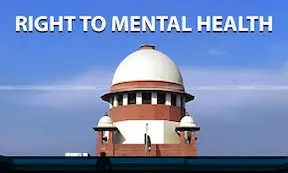
Why in News?
In a landmark judgment in the case of Sukdeb Saha vs State of Andhra Pradesh, the Supreme Court of India has ruled that mental health is a fundamental right under Article 21 (Right to Life) of the Constitution. The judgment was delivered in the context of the tragic suicide of a 17-year-old NEET aspirant in Visakhapatnam, highlighting systemic failures in India’s education system.
Key Takeaways
- Mental Health = Right to Life: Recognized as part of the Right to Life under Article 21.
- Saha Guidelines issued to educational institutions for mental health support.
- Establishes state and institutional responsibility in ensuring student well-being.
- Signals a paradigm shift in how India addresses mental health—from individual burden to systemic accountability.
Case Background
- The case stemmed from the suicide of a NEET aspirant in Visakhapatnam.
- Allegations of academic pressure, neglect, and lack of support systems in coaching institutes and hostels.
- The court held that institutional structures must actively protect mental health, especially of vulnerable groups like students.
Saha Guidelines: Key Directives
- Mandatory Mental Health Frameworks in:
- Schools
- Colleges
- Hostels
- Coaching institutes
- Time-bound implementation mandated by the court.
- District-level monitoring committees to oversee compliance.
- States must report implementation progress regularly.
Challenges to Implementation
- Institutional Inertia: Educational institutions may resist changes or delay reforms.
- Shortage of Mental Health Professionals: Especially in rural and semi-urban areas.
- Cultural Stigma: Mental health remains a taboo in many communities.
- Lack of Infrastructure & Funding: Need for dedicated support staff and mental wellness spaces.
- Political Will: Essential for state-level policy shifts and monitoring.
Impact and Significance
- Redefines “Right to Life” to include emotional and psychological well-being.
- Highlights the duty of the State to ensure a supportive environment for education and mental health.
- Recognizes student suicides as a systemic failure, not just personal tragedies.
- Potentially expands accountability of private coaching centres and hostel operators.
Exam Connect – Possible Questions
Prelims
1. With reference to the “Saha Guidelines” recently seen in the news, consider the following statements:
1.They are related to institutional mechanisms for safeguarding mental health.
2. They were issued by the Ministry of Health and Family Welfare.
3. They are binding on all educational institutions including coaching centres.
Which of the statements is/are correct?
A. 1 and 2 only
B. 1 and 3 only
C. 2 and 3 only
D. 1, 2 and 3
Answer: B. 1 and 3 only
(Note: They were issued by the Supreme Court, not the Health Ministry.)
2. Article 21 of the Constitution has been interpreted to include which of the following rights?
1. Right to Livelihood
2. Right to Education
3. Right to Shelter
4. Right to Mental Health
Select the correct answer using the code below:
A. 1, 2 and 3 only
B. 2 and 4 only
C. 1, 2, 3 and 4
D. 1 and 4 only
Answer: C. 1, 2, 3 and 4
Mains
1.“The inclusion of mental health under Article 21 marks a shift in the understanding of the Right to Life.” Discuss the significance of the Supreme Court’s judgment in Sukdeb Saha vs State of Andhra Pradesh and its implications for public policy.
2. Student suicides in India are not isolated events but a reflection of deep structural issues in the education system. In light of this statement, critically evaluate the role of educational institutions in ensuring mental well-being.
5. Tropical Forest Forever Facility (TFFF): Brazil’s COP30 Forest Finance Model – Environment
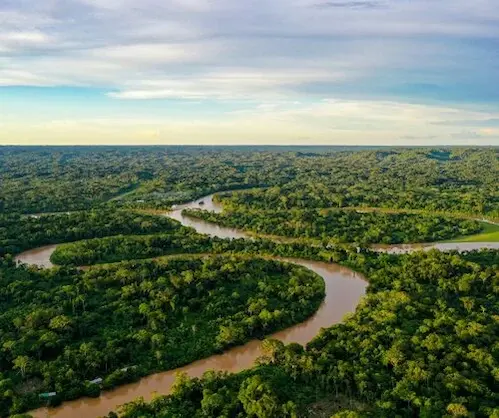
Why in News?
Ahead of COP30 (to be hosted by Brazil), the country has launched a new international climate finance initiative called the Tropical Forest Forever Facility (TFFF). The facility aims to provide long-term financial support to Tropical Forest Countries (TFCs) for conserving standing forests and addressing global climate change through forest protection.
Key Takeaways
- What is TFFF?
A blended finance facility that compensates Tropical Forest Countries for conserving forests. - Performance-Based Payments:
Payments are based on actual forest conservation outcomes, adjusted for deforestation and degradation. - IPLC Focus:
Minimum 20% of payments are earmarked for Indigenous Peoples and Local Communities (IPLCs). - Monitoring Mechanism:
Conservation results are monitored using satellite data under the supervision of a TFFF Secretariat. - Complementary to REDD+:
TFFF does not replace but complements REDD+, a UN-backed forest finance mechanism.
Financial & Institutional Design
Tropical Forest Investment Fund (TFIF)
- Core Mechanism: TFIF is the financial arm of TFFF.
- Administered by: A Multilateral Development Bank, likely the World Bank.
Funding Sources
- Sponsors (20%):
- High-income countries
- Philanthropic foundations
- Offer grants and concessional loans
- Market Investors (80%):
- Institutional investors
- Sovereign wealth funds
- University endowments
Investment Strategy
- Invests in:
- Liquid public bonds (e.g., US Treasuries)
- Corporate bonds (e.g., Apple)
- Green/Blue bonds
- Excludes fossil fuels to ensure environmental alignment.
- Annual payout increases by 2% to adjust for inflation.
Challenges and Concerns
| Challenge | Explanation |
|---|---|
| Financing Burden on Global South | Higher borrowing costs could mean that poorer nations end up financing their own forest conservation. |
| Credit Rating Dependency | Returns depend on global credit rating agencies like Moody’s, S&P, and Fitch. |
| Geopolitical Risk | Oversight by the World Bank raises concerns of US-dominance and unequal control. |
| IPLC Underfunding | Historically, Indigenous Peoples received <1% of climate aid, despite repeated pledges. |
| Forest Definition Disputes | Varying definitions (canopy cover of 20-30%) may disadvantage countries with sparse forests, particularly dry tropical regions. |
Back2Basics: What is REDD+?
| REDD+ | Description |
|---|---|
| Full Form | Reducing Emissions from Deforestation and Forest Degradation Plus |
| Launched by | UN (FAO, UNEP, UNDP) in 2008 |
| Under | United Nations Framework Convention on Climate Change (UNFCCC) |
| Partner Countries | 65+ developing nations |
| ‘+’ Component | Adds: Conservation, sustainable forest management, and carbon stock enhancement |
| Objective | Financially reward countries for reducing deforestation and protecting forest carbon |
Exam Connect – Possible Questions
Prelims
1. With reference to the Tropical Forest Forever Facility (TFFF), consider the following statements:
1.It is administered by the United Nations Environment Programme.
2. It mandates a minimum share of funding for Indigenous Peoples and Local Communities (IPLCs).
3.It replaces the REDD+ framework under the UNFCCC.
Which of the statements is/are correct?
A. 1 and 2 only
B. 2 only
C. 2 and 3 only
D. 1, 2 and 3
Answer: B. 2 only
(Note: Administered by a Multilateral Development Bank, not UNEP. It complements, not replaces, REDD+.)
2. Which of the following best describes the REDD+ mechanism?
A. A legally binding international treaty on climate change.
B. A carbon trading scheme led by the World Trade Organization.
C. A voluntary results-based initiative for forest conservation under the UNFCCC.
D. A private-sector initiative for afforestation in Africa.
Answer: C. A voluntary results-based initiative for forest conservation under the UNFCCC.
Mains
1. “Innovative climate finance mechanisms like the Tropical Forest Forever Facility (TFFF) offer new hope for forest conservation but raise serious equity concerns.”
Critically evaluate.
2. Discuss the role of financial instruments in achieving the goals of international forest conservation. How does TFFF differ from earlier models like REDD+?
6. Bank for International Settlements (BIS) and Concerns Over Global Market Disconnect – International Relations
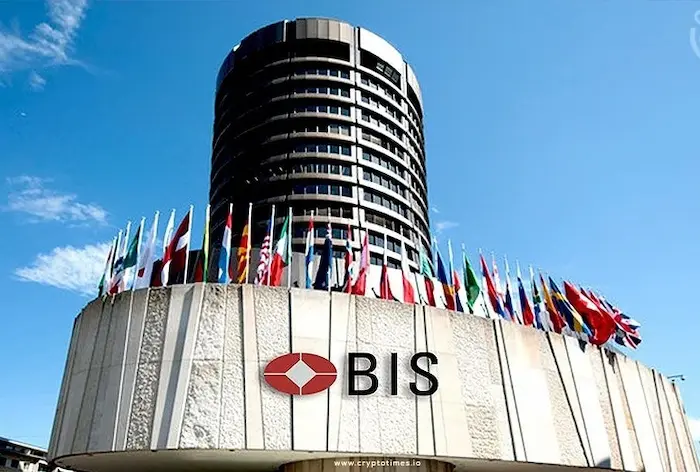
Why in News?
The Bank for International Settlements (BIS) has raised red flags about record-high global share prices, warning that they appear disconnected from rising government debt levels and macroeconomic fundamentals. This has revived concerns about global financial stability amid ongoing geopolitical and inflationary pressures.
What is the Bank for International Settlements (BIS)?
| Feature | Details |
|---|---|
| Established | 1930 (Oldest international financial institution) |
| Headquarters | Basel, Switzerland (Offices also in Hong Kong & Mexico City) |
| Ownership | Owned by 63 central banks, representing ~95% of global GDP |
| Role | Acts as a “central bank for central banks” |
| India’s Representation | Through the Reserve Bank of India (RBI) |
Key Functions of the BIS
- Financial & Monetary Stability
- Promotes international monetary cooperation
- Coordinates responses to financial crises
- Banking Services to Central Banks
- Reserve management
- Gold and forex transactions
- Liquidity support mechanisms
- Research & Policy Support
- Macroeconomic research
- Training and technical assistance
- Regulatory Standards
- Hosts the Basel Committee on Banking Supervision (BCBS)
- Develops Basel norms on capital adequacy, liquidity, and risk management
Recent BIS Concerns
- Global equity prices are rising despite:
- Mounting government debt
- Persistent inflation risks
- Fragile geopolitical environment
- BIS warns of a “disconnect” that may lead to market corrections or financial shocks.
- Encourages central banks to monitor asset bubbles and align monetary policies with fiscal realities.
India and the BIS
- RBI is a full member and participates in:
- BIS Board of Governors
- BIS research networks
- BIS-hosted working groups (e.g., on Digital Currencies, Cybersecurity, etc.)
- Basel Norms in India:
- India has adopted Basel III standards.
- RBI follows BIS recommendations on capital buffers, stress testing, and liquidity coverage.
- Digital Innovations:
- India collaborates with BIS on CBDCs and fintech regulation.
- BIS Innovation Hub is a key partner in India’s digital payment ecosystem expansion.
Exam Connect – Possible Questions
Prelims
1. With reference to the Bank for International Settlements (BIS), consider the following statements:
1.It provides financial services only to private commercial banks.
2.It hosts the Basel Committee on Banking Supervision.
3.India is not a member of the BIS.
Which of the statements is/are correct?
A. 1 only
B. 2 only
C. 1 and 3 only
D. 1, 2 and 3
Answer: B. 2 only
(Statement 1 is incorrect – BIS serves central banks, not private banks. Statement 3 is incorrect – India is a member via RBI.)
2. The Basel norms, developed under the aegis of which of the following institutions, deal primarily with:
A. International trade
B. Tax harmonization
C. Banking regulation
D. Sovereign debt management
Answer: C. Banking regulation
Mains
1. Discuss the role of the Bank for International Settlements (BIS) in promoting global financial stability. What is India’s stake in its functioning?
2. The BIS recently raised concerns about the growing disconnect between global share prices and government debt. Analyze the implications of such financial divergence on developing economies like India.

